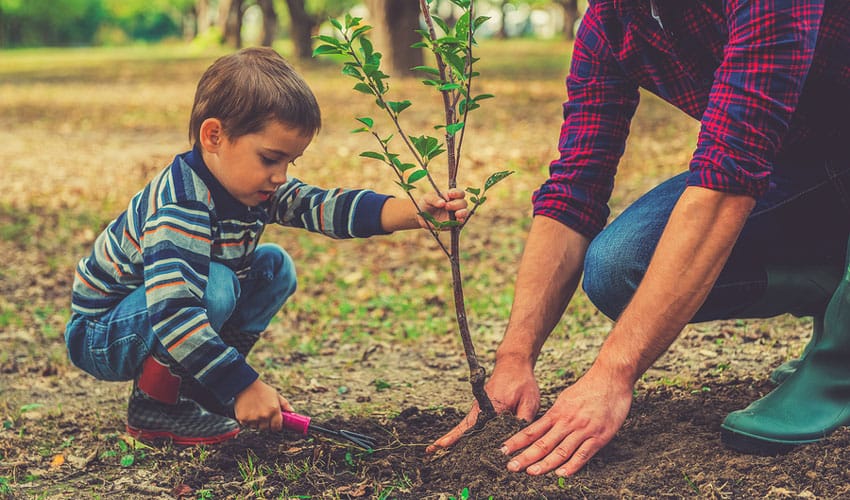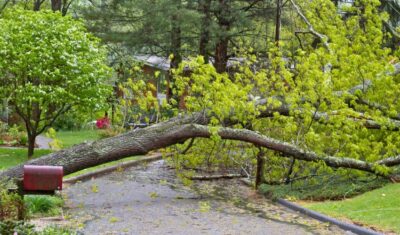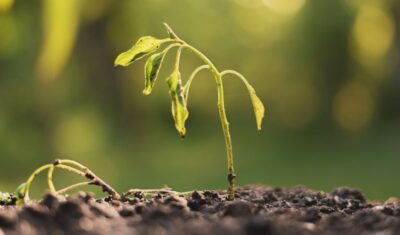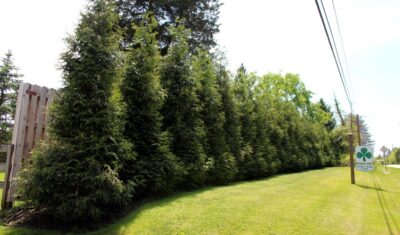
“We have seen thousands of fine trees planted with a few dry roots crowded into a little hole scooped out of sod and covered with the same. This is called planting? When will such abomination cease?” – H. Garrison (1875). Illinois State Hort. Soc. 9: 366-371.
So, you want to plant a new tree or shrub? Maybe you’ve lost some of your plants during the surge of storms we’ve been hit with, maybe you want to plant one in honor of a loved one or special event, or maybe it’s just because trees are awesome and why wouldn’t you want to plant one… or 2… or 3… or more for that matter!
Remember purchasing a tree is a lifelong investment. How well this investment grows depends on the type of tree selected and the planting location, as well as the care provided during planting and the follow-up care after planting.
NOTE: Moving is stressful on trees too. Trees can lose a significant portion of their root system when dug at the nursery. As a result, trees commonly exhibit what is known as “transplant shock.” Proper site preparation, careful handling to prevent further root damage and good follow-up care reduces shock and promote faster recovery and growth.
You may have heard the expression “Plant a $5 tree in a $100 hole.” These days, you’re unlikely to find a healthy $5 tree for sale, but the key point of the message still holds – plant the tree properly! If you mess up this step, it doesn’t matter what else you do – the tree is doomed.
Improper planting technique is the most common reason why transplanted trees die. Usually, it’s because the tree was planted too deeply.
Tree Planting Tips
Most of our ornamental trees are budded (a process where a single bud of the desired cultivar is placed on the seedling rootstock and allowed to grow). Budding is usually done about 2″ to 3″ above the ground so be sure that the slight crook in the trunk left over from this process is above the ground.
Don’t plant at the same depth you found the tree in the container! Many containerized trees (and even many that are balled and burlaped) are placed into the container too deep. This is done to help improve stability while in the nursery or garden center (it’s hard to sell trees that keep falling out of their container). In the short term, the tree can survive this; container soils are usually well-drained. But when you transplant the tree, don’t think that “if that’s how it was planted in the container, then that’s how I should plant it in the ground.”
Look for the trunk flare – the base of the trunk where it starts to get wider, just above the roots. You want that to be just above the soil surface – you should see it when the tree is planted.
Dig the hole about 2 to 3 times wider than the container or root ball. The roots need to be able to easily penetrate into the surrounding soil to help stabilize the tree and take up water and nutrients. If the planting hole is too small, the roots can start growing around in circles instead of spreading out; girdling like this eventually kills the tree.
Dig the planting hole only as deep as the root ball. This is not the time to “fluff up the dirt”. You want the soil under the tree to be undisturbed to provide a solid foundation for the tree so that, over time, the tree doesn’t sink lower into the ground. If in doubt about depth, err on the side of shallower is better. Planting high is better than planting deep.
Remove any burlap, wire basket and/or nylon rope before planting. While the burlap may disintegrate over time, the wire basket and nylon rope definitely won’t. Instead, they’ll prevent the roots from spreading out, leading to an unstable and poorly developed tree.
If the tree is in a container, gently remove the container while disturbing the rootball as little as possible. Prune any roots that may be circling around the rootball.
Don’t add topsoil or potting mix when you fill the planting hole. There’s no need to provide the tree with “good dirt”; just use whatever came out of the hole when you dug it.
Water well. Tamp the soil firmly around the tree to eliminate air pockets but don’t stomp on it or try to compact it. Be sure to water your tree in well while planting. To help keep water near the tree when you irrigate, build a small wall of soil around the planting hole.
After the Tree is Planted
There are only three things you need to do to a tree that’s just been planted: mulch, stake (if necessary), and water. That’s it. How hard could that be? Well, you’d be surprised how many people mess it up…
Cover the soil with mulch but keep it away from the tree trunk. Trees are no different that other plants – they’ll benefit from a nice layer of mulch. Not only does mulch conserve moisture and keep soil temperatures lower during the hot summer months, but it eliminates competition for resources from weeds and grass. And, in the case of trees, it provides a nice buffer around the tree to protect it from “mower blight” or “string trimmer flagellation”. Just don’t place it against the tree trunk where it can lead to mold and rot.
Only stake if necessary. Contrary to popular belief, staking is generally not necessary. But, if you absolutely must do it, do it right. Use two wooden stakes (not metal ones), one on either side of the tree. Tie the tree using a wide cloth strap that is loosely tied. Don’t use wire, nylon cord, or anything else that can bite into the bark. And don’t tie it too tightly – the tree should still be able to move slightly. This slight movement will help to generate stronger roots and, in the case of high winds, the tree is less likely to snap off.
Which brings up another point – tie the tree at about 1/2 of its height; any lower and you’ll end up with a giant lever, with the canopy moving around in the wind and eventually lifting the roots straight up into the air (usually with an explosion of dirt and mulch). Remove the stakes at the end of the first growing season.
Keep watering. In most areas, including here in northeast Ohio, a newly-planted tree needs about 1 gallon of water per inch of tree trunk diameter. As for how long to keep up the watering routine, here are some general guidelines
- For a trunk diameter of less than 2″, water daily for 2 weeks, then weekly until the tree is established.
- For a trunk diameter of 2″ to 4″, water daily for 1 month, then weekly
- For anything larger than 4″, water daily for 6 weeks, then weekly
And, generally speaking, that’s it. As with anything that’s been newly planted, keep an eye on your new tree for insect or disease problems (which are more common when the plant is stressed, like when it’s been transplanted) and make sure the soil isn’t settling or the roots popping up.
And, of course, if you have any questions give us a call. We’re always happy to discuss options for what to plant, where to plant it and if you’d like, we’ll even plant it for you!
We Can Help!
Independent Tree can plant your trees for you! Contact us to learn more about our tree planting and transplanting services.Recent Articles
Topics
About The Author

STAY IN THE LOOP
WITH OUR
LATEST UPDATES
"*" indicates required fields






